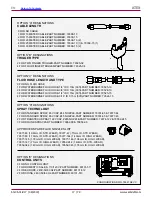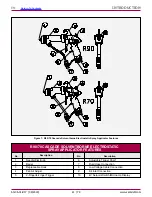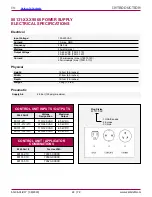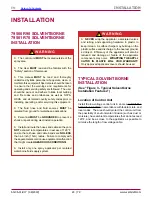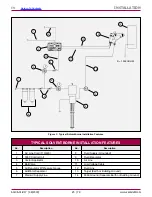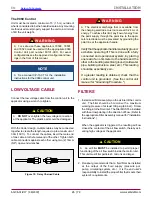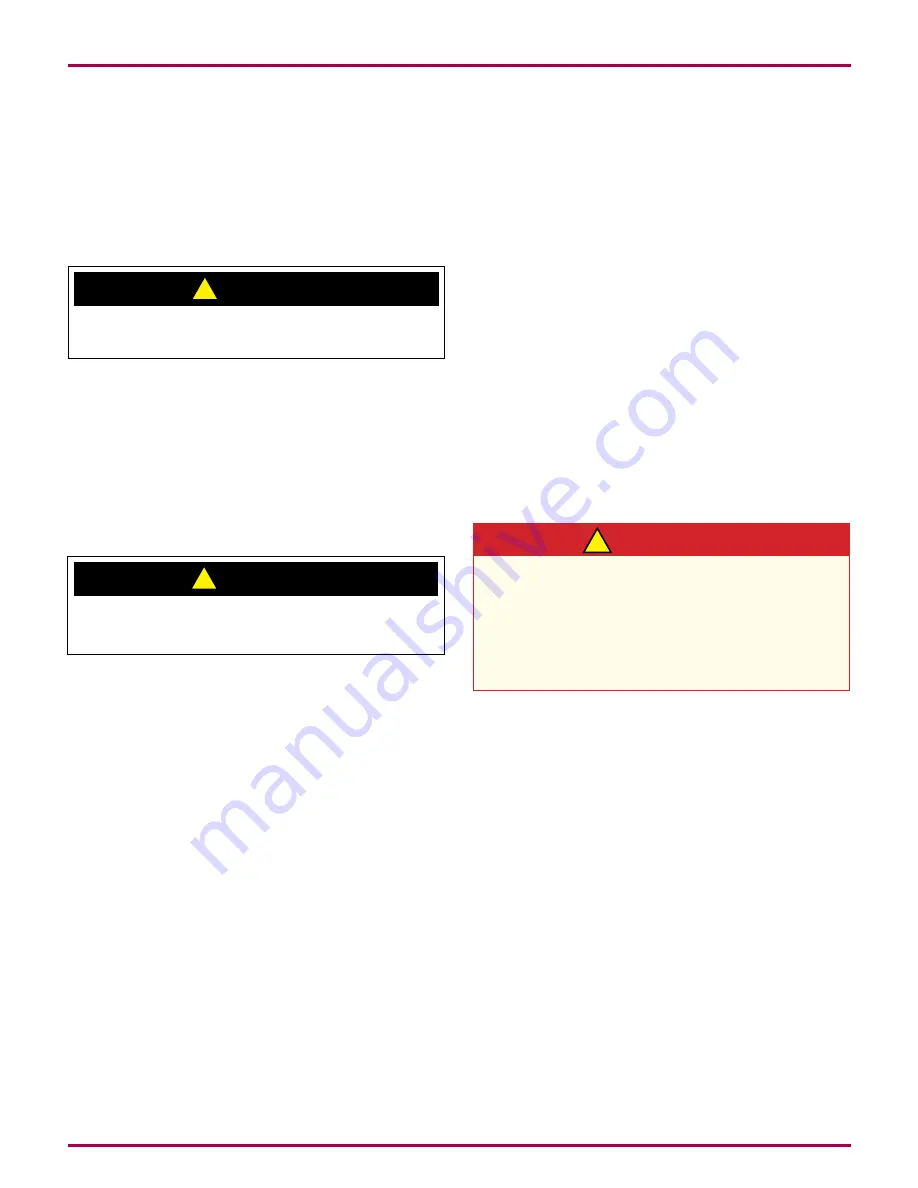
CAUTION
!
CAUTION
!
WA R N I N G
!
Routing of Air and Fluid Hoses
Starting at the applicator, route the air hose along the same
path as the low voltage cable to the low voltage control unit.
The fluid hose can be run with the low voltage cable and air
hose or it can be separate and run to the fluid source. Do
not expose the hoses to high temperatures (over 120
°
F)
and/or conditions such as moving parts, foot traffic, vehicle
traffic, etc.
Adjust the length of the air hose to the low voltage controller
and install the fitting to the hose.
Air Hose Recommendation
Ransburg recommends using a 79547-XX air hose assembly
that may be ordered through your authorized Ransburg dis-
tributor. This hose performs best with the Vector to reduce
air hose stiffness along with weight reduction. Available
hose lengths are listed in "Accessories" in the "Parts Iden-
tification" section of this manual.
Fluid Hose Recommendation
Ransburg recommends using a 79548 fluid hose assembly.
This assembly is made to specifically fit the fluid fitting
size engineered into the applicator. This hose is available
from your authorized Ransburg distributor. Available hose
lengths are listed in "Accessories" in the "Parts Identification"
section of this manual.
Any user installed air hose must be rated for 100
psig (6.9 bar) working pressure minimum.
Air and Fluid Hose Installation
The fluid inlet fitting for the Vector applicator is 3/8-18
NPSM(M). When installing a fluid hose, tighten the fitting
adequately to prevent any fluid leaks. The air inlet fitting
is 1/4-18 NPSM(M). When installing the air hose, use a
wrench to hold the air inlet fitting on the Vector and tighten
the air hose fitting enough to prevent any air leaks.
Any user installed fluid hose used must be rated
for 100 psig (6.9 bar) working pressure minimum.
When securing the air hose, fluid hose, and low
voltage cable together, take care not to use items
such as wire or anything that might cut into the hos-
es or cable. If wire ties are used, they should only
be tight enough to secure the cable and not so tight
that they might restrict fluid and air flow.
Prior to connecting the air hose to the low voltage unit and
the fluid hose to the fluid supply, adjust the hose and low
voltage cable position at the applicator to relieve some
strain on the low voltage cable. To do this, perform the
following procedure:
1. Disconnect the air hose from the applicator.
2. Position the air hose 1-inch (2.5cm) away from the
bottom of the handle.
3. Secure the air hose to the low voltage cable. Secure
the two together at one additional location, about
12-16-inches (30-41cm) back.
4. With a wrench, reconnect and secure the air hose to
the applicator. (This should form a small loop in the
low voltage cable.)
5. Secure the fluid hose to the air hose and low voltage
cable as needed.
PAINT PREPARATION
A proper paint mixture is essential to electrostatic opera-
tion. Paint test equipment may be obtained through your
Ransburg distributor. Reference the Technical Manual
"Paint Related Information for REA, REM, Vector, and M90
Guns" for paint formulation information. For further paint
formulation and testing procedures, consult your Ransburg
distributor and/or your paint supplier.
AH-06-01-R17 (08/2019)
27 / 79
www.carlisleft.com
INSTALLATION
EN





